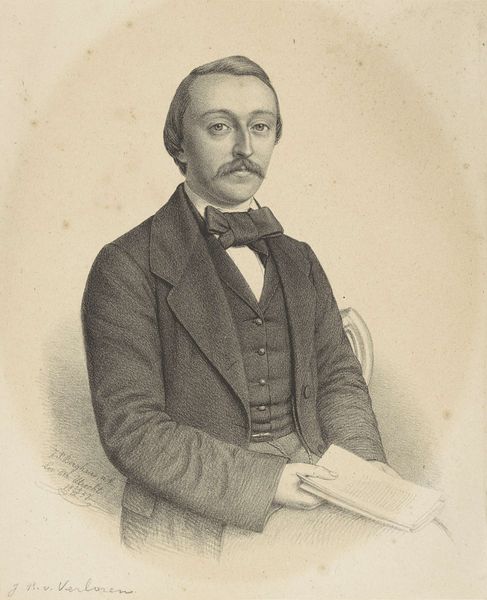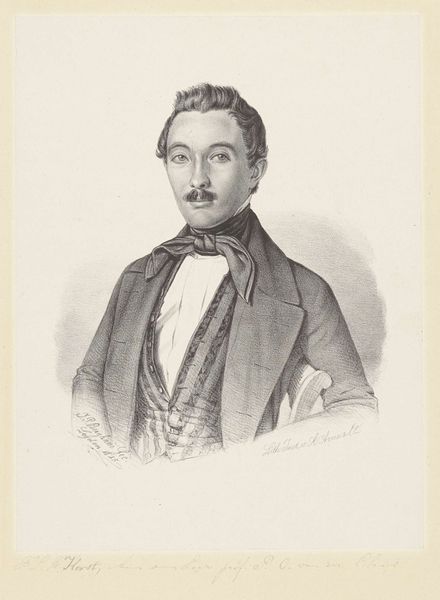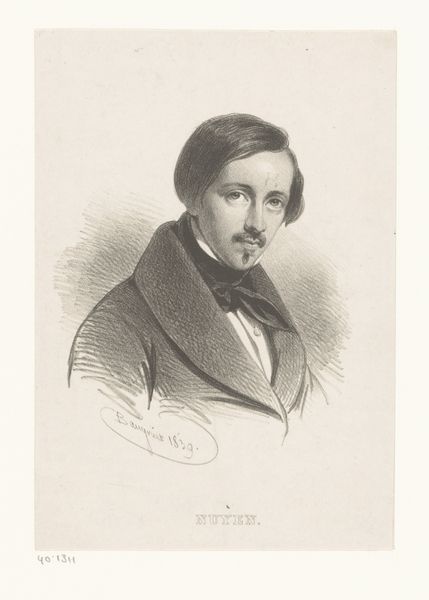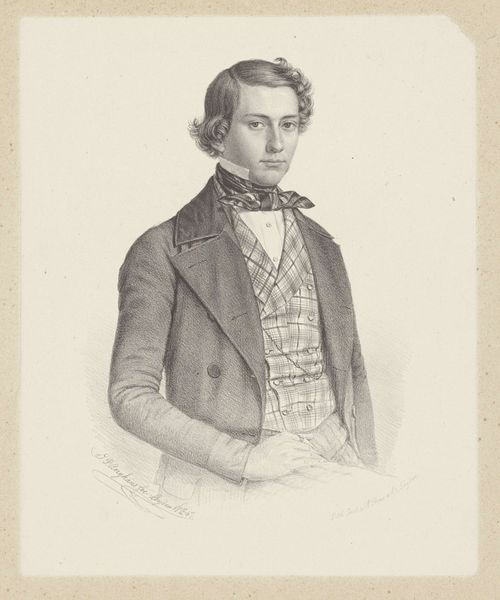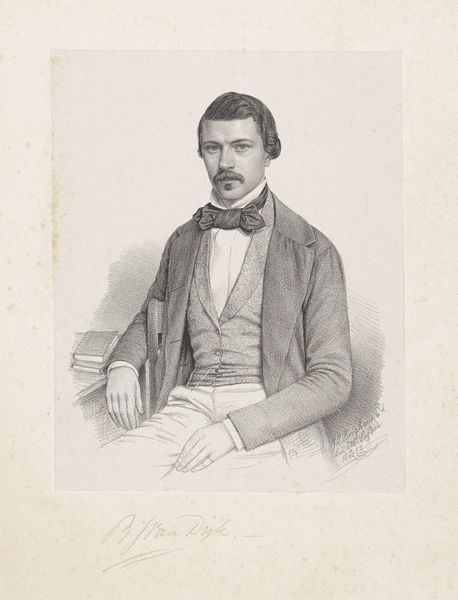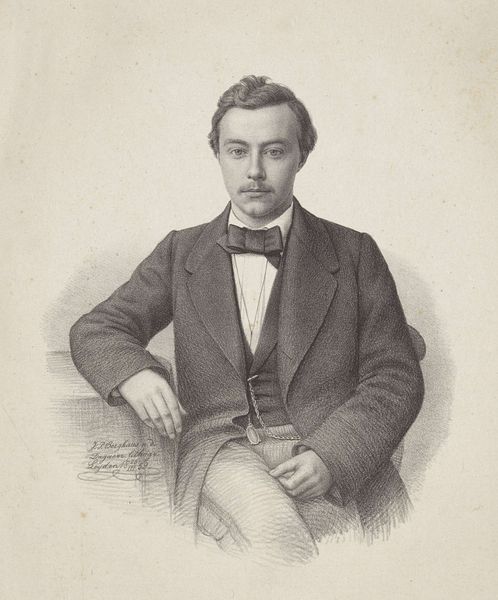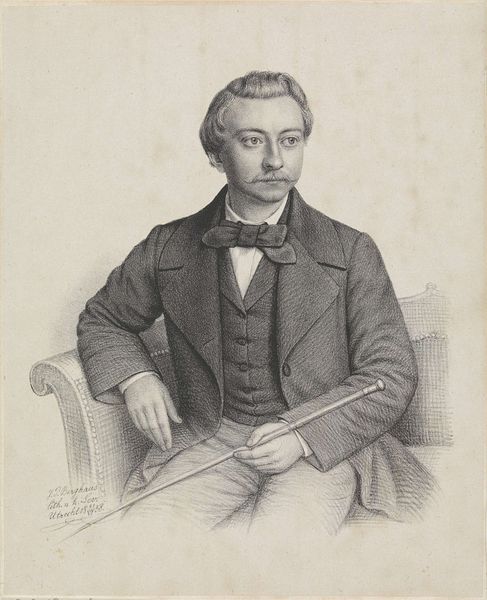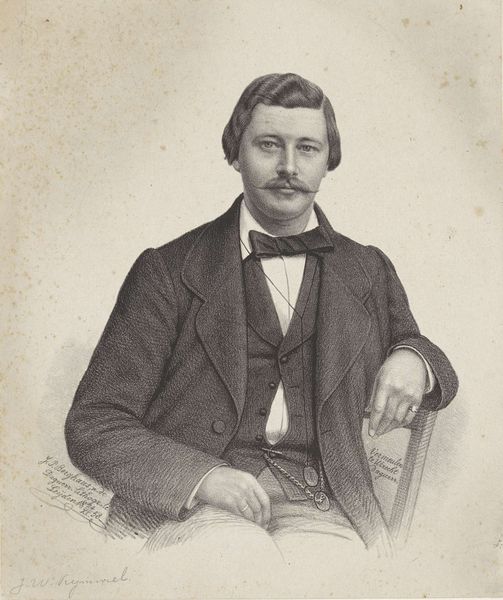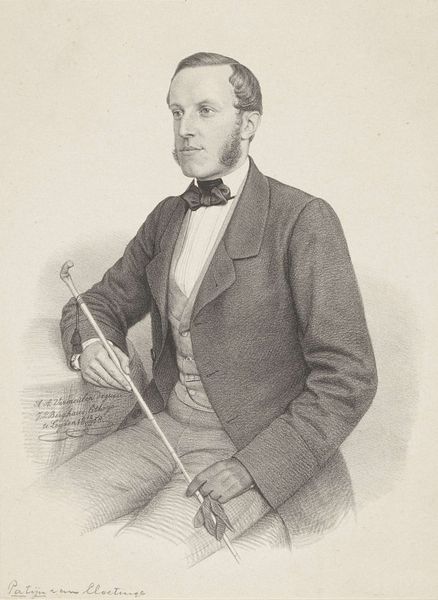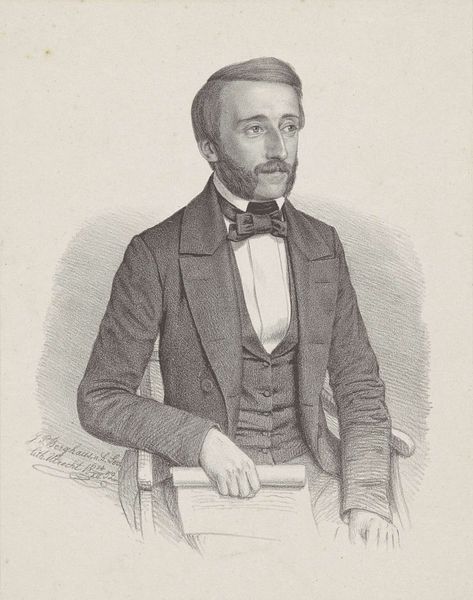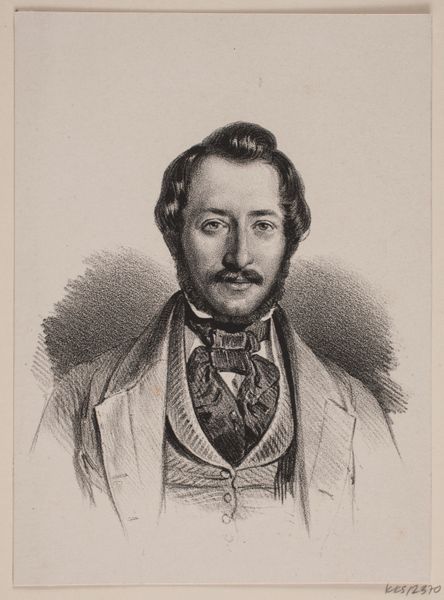
Dimensions: height 355 mm, width 300 mm
Copyright: Rijks Museum: Open Domain
Johann Peter Berghaus made this portrait of W. Th. de Jonge in the Netherlands in the mid-19th century, with a technique called lithography. It seems simple, but it tells us a lot about the cultural values of the time. The portrait captures de Jonge in a pose of bourgeois respectability. We see the fashions of the day in his formal jacket, waistcoat, and bow tie. His composed demeanor and the artist’s attention to detail speak to the premium placed on social status and decorum. But how might that status have been made visible in an artwork such as this? Lithography itself was a relatively new technology at the time, which made images more widely accessible. Research into Dutch society in this period, including printed sources, can tell us about the social and economic changes that made this kind of portraiture popular, and the institutions that sustained artistic production. By combining formal analysis with historical context, we can better understand the role of art in shaping cultural values.
Comments
No comments
Be the first to comment and join the conversation on the ultimate creative platform.
